Before installing a ceiling fan, one very important aspect to be considered is how much power a ceiling fan uses? If you’re looking to save energy, it’s important to know exactly how many amps your ceiling fan is drawing. The knowledge about the electricity consumption of my ceiling fans definitely helped me save electricity costs. Thus, understanding the power consumption of your ceiling fan can help you make sure that you’re not paying more than necessary in electricity costs.
Contents
- 1 How Many Amps Does A Ceiling Fan Use?
- 2 How Many Amps Does A 42 Inch Ceiling Fan Pull?
- 3 How Many Amps Does A 52 Inch Ceiling Fan Use?
- 4 How Many Ceiling Fans On A 15 Amp Circuit?
- 5 How Many Fans Can You Run On A 20 Amp Breaker?
- 6 How Do I Calculate Ceiling Fan Power Consumption?
- 7 How Much Electricity Does A Ceiling Fan Use In 24 Hours?
- 8 Does A Ceiling Fan Need Its Own Circuit?
- 9 What Size Breaker Do I Need For A Ceiling Fan?
- 10 What Size Wire Is Needed For A Ceiling Fan?
- 11 How Do Amps Compare To Watts?
- 12 different sizes of ceiling fans in inches and the amp
- 13 Frequently Asked Questions on Amps Used by Ceiling Fans
- 14 Conclusion
In this article, we will look at the typical amount of amperage/ watts used by a ceiling fan and what factors can affect its energy usage.

How Many Amps Does A Ceiling Fan Use?
A gentle breeze washes over the room, bringing a sense of calm. The ceiling fan whirls softly overhead, its blades cutting through the air with ease. But how much power does it take to keep this fan running? How many amps does a ceiling fan use?
The answer varies depending upon the size and type of ceiling fan you have. Generally speaking, most standard-size fans will draw about 5-7 amps during operation on medium speed settings. However, if your fan is larger or has additional features such as lights or reversible motors, then it may require more energy. It’s important to research the specifications of your particular unit in order to determine the exact amount of electricity needed for optimal performance.
With that said, there are some general guidelines when considering how many amps a ceiling fan needs. Most manufacturers recommend using only 1 amp per 100 square feet of space when calculating electrical requirements for proper ventilation and cooling capacity — so an average 8×10 bedroom would likely need no more than 10 amps total for both lighting and circulating air. Now let’s look at how many amps does a 42 inch ceiling fan pull.
How Many Amps Does A 42 Inch Ceiling Fan Pull?
The size of a ceiling fan is measured in terms of the diameter of its blades. A 42 inch ceiling fan requires more power to operate than a smaller one, as it needs to move more air due to its larger blade diameter. Here are some key points about how many amps does a 42 inch ceiling fan pull:
- The wattage rating will determine how many amps are needed. Most 42 inch fans require between 40-70 watts.
- At 120 volts, this would equate to 0.3-0.58 amps for operation.
- However, the number of bulbs used on the fan can also affect the amperage draw, with up to 4 additional lamps increasing the amp usage by an additional 1-2 amps per bulb.
- If your home has lower voltage wiring (100-110 volts), then you may need to increase the wattage or use fewer lights to compensate and keep within safe electricity requirements.
- It’s important not to exceed your circuit breaker capacity when installing multiple fans; if unsure, contact an electrician for advice before proceeding.
With these considerations in mind, it’s possible to gain an understanding of how much electricity a single 42 inch ceiling fan draws from your home’s electrical system each time it is turned on or off.
How Many Amps Does A 52 Inch Ceiling Fan Use?
The average 52 inch ceiling fan uses up to 60 watts of electricity, which translates to 0.5 amps when running on full power mode. Another important factor in determining how much electricity your fan will use is the type and size of blades installed; larger and wider blades tend to require more energy to operate due to their increased air resistance.
It’s also worth noting that some fans may come with a special feature called ‘ECO Mode’ which helps reduce the amount of energy used by the fan motor. By reducing the speed of the motor, you can expect your fan to draw less than 0.5 amps when operating in this way. If available, it can be an effective way to save money on electricity bills while still enjoying a cool breeze from your ceiling fan!
Overall, most 52 inch ceiling fans should not exceed 1 amp when operating on full power mode – although as mentioned above there are certain factors that could affect this number such as blade size and ECO Mode availability.
How Many Ceiling Fans On A 15 Amp Circuit?
A 15 amp circuit can typically handle up to 1.5 amps per ceiling fan, without exceeding the breaker limit of 15 amps. So, you can safely connect up to 10 fans on a 15 amp circuit.
| Fans | Max Amps |
|---|---|
| 1 | 1.5 |
| 2 | 3 |
| 3 | 4.5 |
| 4 | 6 |
| 5 | 7.5 |
| 6 | 9 |
| 7 | 10.5 |
| 8 | 12 |
| 9 | 13.5 |
| 10 | 15 |
However, it is important to remember that these calculations are based on an ideal environment where each fan operates at full speed and all other appliances draw minimal power from the same circuit. In reality, depending on your home’s layout and additional electrical loads such as lamps or lighting fixtures, you may need to adjust this calculation accordingly for safety reasons.
How Many Fans Can You Run On A 20 Amp Breaker?
The amount of ceiling fans you can run on a 20 amp breaker is dependent upon the total wattage of all the connected devices. As such, understanding how to calculate power consumption for each fan is essential. Weaving together this electrical equation requires multiple components and calculations:
- Calculating Wattage:
- Determine the voltage rating (V) of your wall outlet
- Multiply V x A = W (amps x volts = watts).
- Determining Amperage Capacity:
- Add up the wattages for all connected appliances
- Divide that number by the voltage rating to determine amps needed
- Subtract 1-2 amps from that number as an extra allowance to avoid overloading the circuit.
By following these steps, you will be able to accurately assess if running multiple ceiling fans on one 20 amp breaker is safe or not.
How Do I Calculate Ceiling Fan Power Consumption?
To calculate the power consumption of a ceiling fan, you’ll need to know the wattage and voltage of your fan. The wattage is usually printed on the motor housing or label. If not, it can be estimated using the diameter of the blades multiplied by their RPM (revolutions per minute).
Once you have these two values, use an electrical formula to determine how many amps your ceiling fan uses. This formula is Watts divided by Voltage equals Amps (W/V=A). For example: A ceiling fan with 180 watts at 120 volts would draw 1.5 amps (180/120 = 1.5).
Knowing the power consumption of your ceiling fan will help you understand how much electricity it consumes in 24 hours.
How Much Electricity Does A Ceiling Fan Use In 24 Hours?
A ceiling fan is like a breath of fresh air, providing relief from the oppressive heat. It’s also an efficient way to cool your home without cranking up the AC and racking up costly energy bills. But how much electricity does it use in 24 hours? Let’s break down this question into its components:
| Usage | Amount of Electricity Used (Watts) | Hours Used Per Day |
|---|---|---|
| Low Speed Setting | 30-60 watts | 4-8 hours per day |
| Medium Speed Setting | 50-100 watts | 2-4 hours per day |
| High Speed Setting | 80 – 180 watts | 1 hour or less per day |
All told, depending on usage habits, a ceiling fan typically uses between 40 and 110 kilowatt-hours of electricity annually—or about 3 to 9 kWh per month. With no further ado let’s move on to find out whether a ceiling fan needs its own circuit.
Does A Ceiling Fan Need Its Own Circuit?
Most ceiling fans require between 0.7 and 3 amps of electricity to operate, depending on the size of the fan and its features. Therefore, it is important to consider whether a ceiling fan needs its own circuit or not before installing one in your home.
The answer depends largely upon how much power the fan will draw when in use. Here are three things you should keep in mind:
- The overall wattage rating for your ceiling fan must be within the amperage of an existing circuit.
- If you have a 15-amp circuit breaker, then up to 1800 watts can be used safely without overloading the circuit.
- A 20-amp circuit breaker can safely handle 2400 watts.
- A 30-amp circuit breaker can support 3600 watts worth of electrical load.
- If the wattage requirement exceeds those numbers, then install a dedicated outlet specifically for that appliance with its own appropriate sized circuit breaker for safety’s sake.
- Installing multiple outlets off one switch may also require their own dedicated circuits if they draw more than 12amps total together (1440 watts).
In addition, many local building codes state that all lighting fixtures must have their own designated circuits; this includes any kind of illuminated wall switches as well as ceiling lights or fans. Taking these steps helps ensure that no single device draws too much current and causes an overload situation, which could lead to fires or other dangerous situations.
What Size Breaker Do I Need For A Ceiling Fan?
When considering what size of breaker do I need for my ceiling fan, it’s important to consider the wattage rating on the motor. Most residential-grade motors are rated between 40 and 80 watts, which translates into about 0.3 – 0.7 amps per hour when running at full speed. For safety reasons, most circuits will require a 15-amp fuse for these types of fans – this way the circuit won’t overload even with multiple appliances connected simultaneously.
It’s important to choose the correct size breaker as too small of a one could cause damage from overheating and too large of a one would waste energy unnecessarily. Installing the right type and size of fuse ensures that all electrical components remain safely powered while avoiding excess electricity usage costs over time. With this knowledge in hand, homeowners can confidently choose their ideal sized breaker knowing they’re making both a practical and responsible decision.
What Size Wire Is Needed For A Ceiling Fan?
Most ceiling fans typically use between 0.75 and 1.5 amps of power, depending on the size and speed settings. The wire size you need for a ceiling fan depends on how much current it uses, as well as its length from the circuit breaker to the fan itself.
The National Electrical Code requires 14-gauge wiring for 15 amp circuits, 12-gauge wiring for 20 amp circuits, and 10-gauge wiring for 30 amp circuits. For example, if your ceiling fan is drawing 1.2 amps over a 25 foot wire run then you will need to use 12 gauge wire even though it is only technically drawing 15 amps because of the long distance that the electricity needs to travel along this wire in order to reach the fan motor.
This means that while many people often assume they can just check the amperage rating of their ceiling fan when deciding what type of wiring they need, they may also have to consider things like voltage drop or any other resistance factors in order to determine exactly what size of wire they should be using in their home’s electrical system.
How Do Amps Compare To Watts?
Parallelism paints the picture for us: amps and watts are both measures of electrical power, but they measure different things. Amps measure the amount of electrical current flowing through a circuit, while watts measure energy consumption over time. The relationship between these two measurements can be illustrated in an easy-to-read table comparing their differences:
| Amps | Watts | |
|---|---|---|
| Measurement type | Current | Power |
| Unit Abbreviation | A | W |
| Relationship | 1A = 1W/Voltage (V) | 1W = 1A x Voltage (V) |
To put it simply, amps tell you how much electricity is passing through an appliance at any given moment; whereas watts reveal how much energy is consumed over time.
different sizes of ceiling fans in inches and the amp
As a general guideline, most ceiling fans operate on a range of 0.5 to 1.5 amps. The actual amps used by a specific ceiling fan will depend on its specifications and design.
Here is a table that lists the sizes of typical ceiling fans and their estimated power consumption based on industry standards:
| Ceiling Fan Size | Estimated Amps Used |
|---|---|
| 30 inches | 0.3-0.5 amps |
| 36 inches | 0.5-0.7 amps |
| 42 inches | 0.7-1.0 amps |
| 44 inches | 0.8-1.1 amps |
| 46 inches | 0.9-1.2 amps |
| 48 inches | 1.0-1.3 amps |
| 52 inches | 1.1-1.5 amps |
| 54 inches | 1.2-1.6 amps |
Note that these are only general estimates, and the actual power consumption of a specific ceiling fan may differ depending on its specifications and other factors.
Frequently Asked Questions on Amps Used by Ceiling Fans
Conclusion
In conclusion, I believe it is important to understand how many amps a ceiling fan uses before you purchase one. By researching and asking questions about the wattage of your chosen fan, as well as any safety features that may be included, you can ensure that your new ceiling fan will not overload your home’s electrical system. Not only does this help keep your family safe, but it also ensures that your energy bill won’t be too high due to an excessive amount of electricity being used.

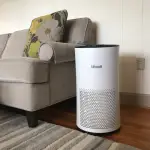
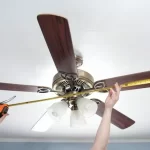
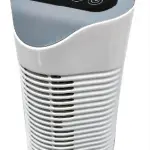



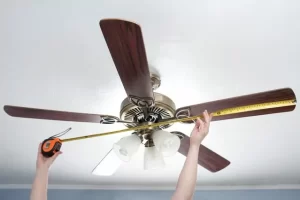
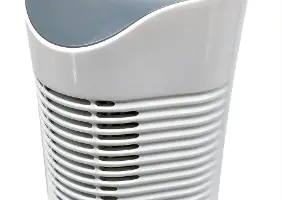

Add Comment